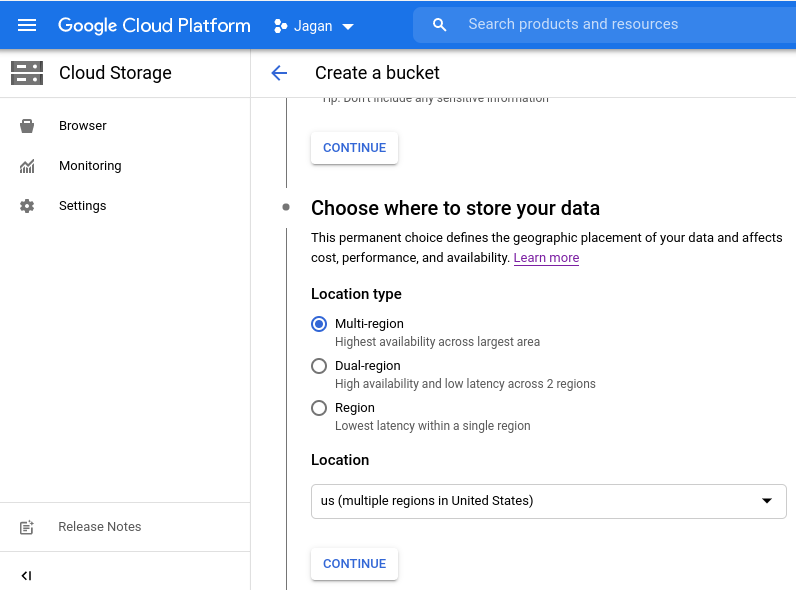

- #Upload image to google cloud storage how to#
- #Upload image to google cloud storage manual#
- #Upload image to google cloud storage full#
In order to satisfy the above requirements, we devised the following architecture with GCP services:
#Upload image to google cloud storage full#
You can access the full set of source files that we’ve used on Github, here. Let’s get started building an image upload feature to use with Cloud Storage. And if the upload server is to be used by millions of users, it will require a lot of work to ensure its scalability and user experience.

You also need to set appropriate resource limits for finite resources (such as RAM) of each server that’s involved.įurthermore, to allow uploading very large files to the server, it can be very costly to develop and host the server. You have to queue requests to the process responsible for uploading the files to control the flow rate, and you have to prevent the system from going down due to request overload. Without using the cloud, it can be difficult to develop and manage a server that lets users upload image files, especially at high scale. This is particularly helpful if you’re running a social media company with constant image uploads, or hosting and managing consumer-generated media.
#Upload image to google cloud storage how to#
In this blog post, you’ll see how to implement a service hosted on Google Cloud Platform (GCP) that allows users to upload images into Cloud Storage using Signed URL, then serve that static content using managed services. If you’re offering services to users and serving them content, you’ll want to use a cloud architecture that can solve traditional problems intelligently, and reduce the cost of developing and hosting servers by taking advantage of the cloud. At the same time, the trend of using serverless architecture means that an unspecified number of end users can seamlessly access resources in the cloud. Add new permission, fill your service account email with your account.As cloud grows in popularity, it has become common to deploy applications in the cloud and provide them to end users.Go to your project in Google Cloud Console.That’s it - the images should now come from Backups are now possible, as thankfully pointed out in this post.

In Discourse settings, change the s3 cdn url to your domain - make sure this ties in with how your load balancer rule has been set up Hosts for both need to be * paths need to be /original/* and /optimized/* and the backend needs to point to the backend bucket - save the settings For the backend, create a backend bucket, point it to the storage bucket created above, enable CDN, and connect itįor the URL map, create two rules. Set up a load balancer if you don’t already have one. It needs to set up using object level permissions though Make sure your bucket is accessible publicly. To ‘serve’ images directly from your domain, follow the steps below: That’s it! Try uploading an image - it should all work magically In s3_endpoint, paste in the below endpoint: Paste in both “ Access Key ID ” and “ Secret Access Key ” in their respective text fields (these were generated when the developer key was created)
#Upload image to google cloud storage manual#
Then make the changes below:Ĭheck the “ enable s3 backups ” checkbox if you want to activate manual or automated backupsĮnter the desired bucket name created above in “ s3 backup bucket ” if enable s3 backups is checked Now we need to configure the Discourse instance. Enter a unique name and select a default storage class (I used multi-regional within the US). Set a default Google project if you don’t have one.Ĭreate a bucket by going here. Do you want to use Google Storage for your image uploads? Here are the steps:


 0 kommentar(er)
0 kommentar(er)
